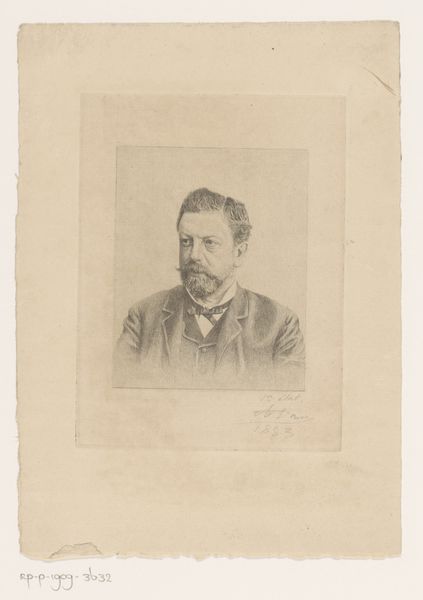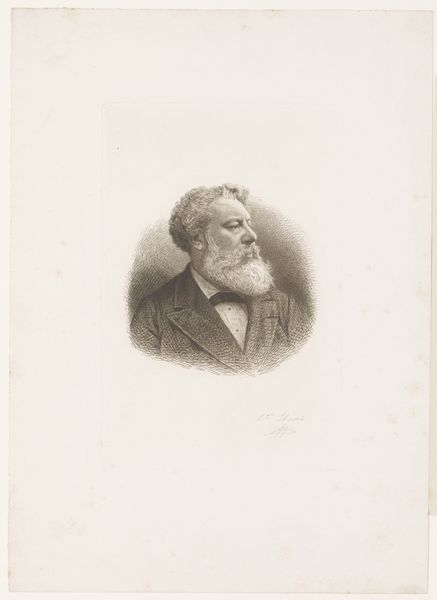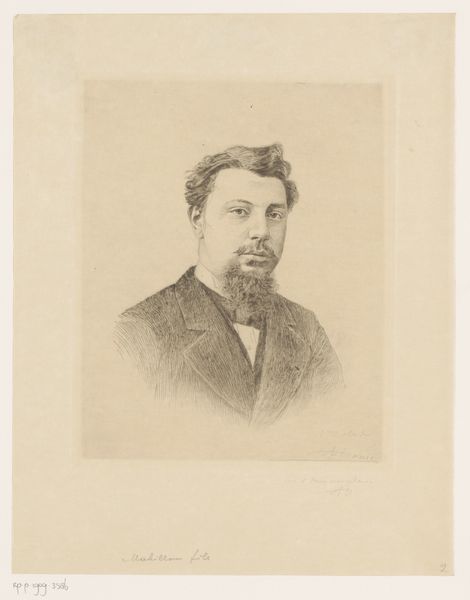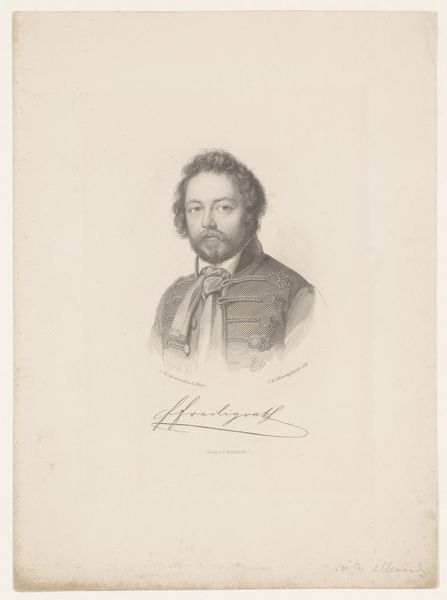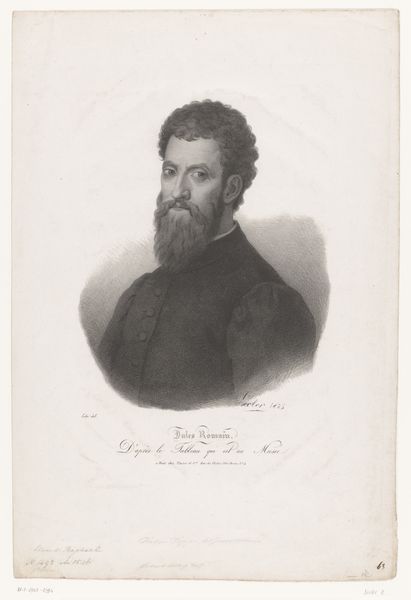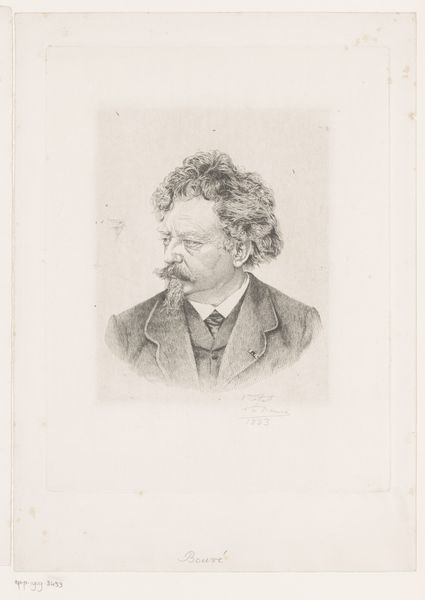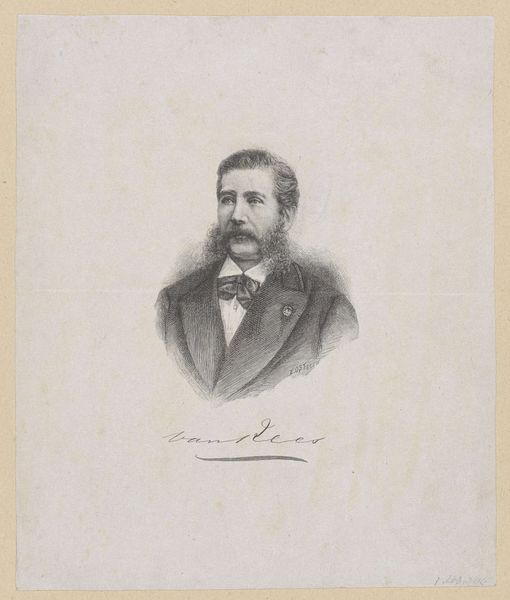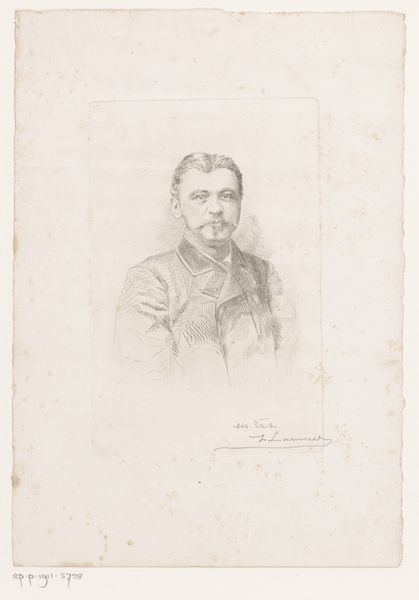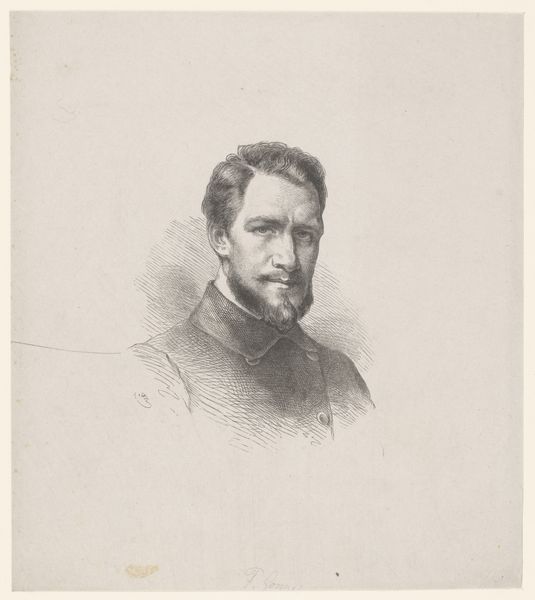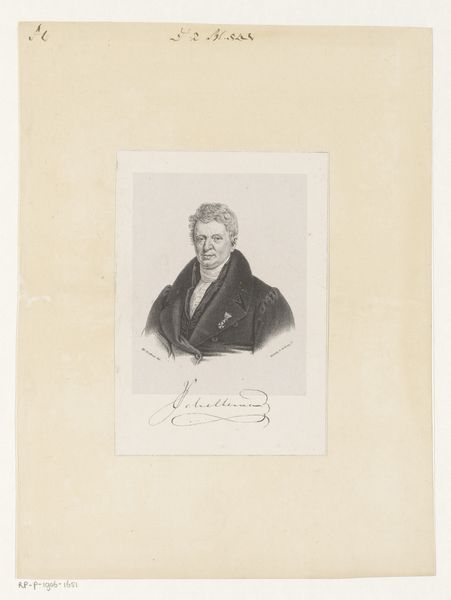
drawing, print, pencil, graphite
#
portrait
#
pencil drawn
#
drawing
# print
#
pencil sketch
#
charcoal drawing
#
pencil drawing
#
pencil
#
graphite
#
portrait drawing
#
academic-art
#
realism
Dimensions: height 346 mm, width 250 mm
Copyright: Rijks Museum: Open Domain
Editor: So, here we have Karl Meunier’s 1888 "Portret van Gustave Bruylants," created with graphite and pencil, a drawing turned into a print, if I'm reading that right. I find the portrait rather...stern, almost confrontational, even though it is in profile. How do you read this image, and perhaps, its cultural setting? Curator: It’s a fascinating piece, isn't it? Considering Meunier’s background and the late 19th century, this portrait has much to say about the era’s visual culture and societal values. Notice the direct gaze even in profile, signaling status. The late 19th century witnessed the consolidation of the bourgeois class, and portraiture became a powerful tool for asserting their presence in the public sphere. Doesn't Bruylants seem almost to be aware he is on display? Editor: Definitely! Knowing that helps. It isn't just a likeness; it's a performance of status, and art participates in making that happen. Are there visual clues about his status beyond that piercing gaze? Curator: Certainly! Think about academic art. Meunier’s style, highly realistic, evokes a certain gravitas. And it served the purpose of commemorating individuals, cementing their legacy. What effect does that have on us, viewing it now? Editor: It almost makes him into an "icon." Before, I just saw a face, now it's more about this figure within a structure of class and image. The artist and patron are performing for society, and shaping that society as they do so. I think I will spend more time with this one. Thank you! Curator: My pleasure! Recognizing the social functions of art certainly changes the way we look.
Comments
No comments
Be the first to comment and join the conversation on the ultimate creative platform.


